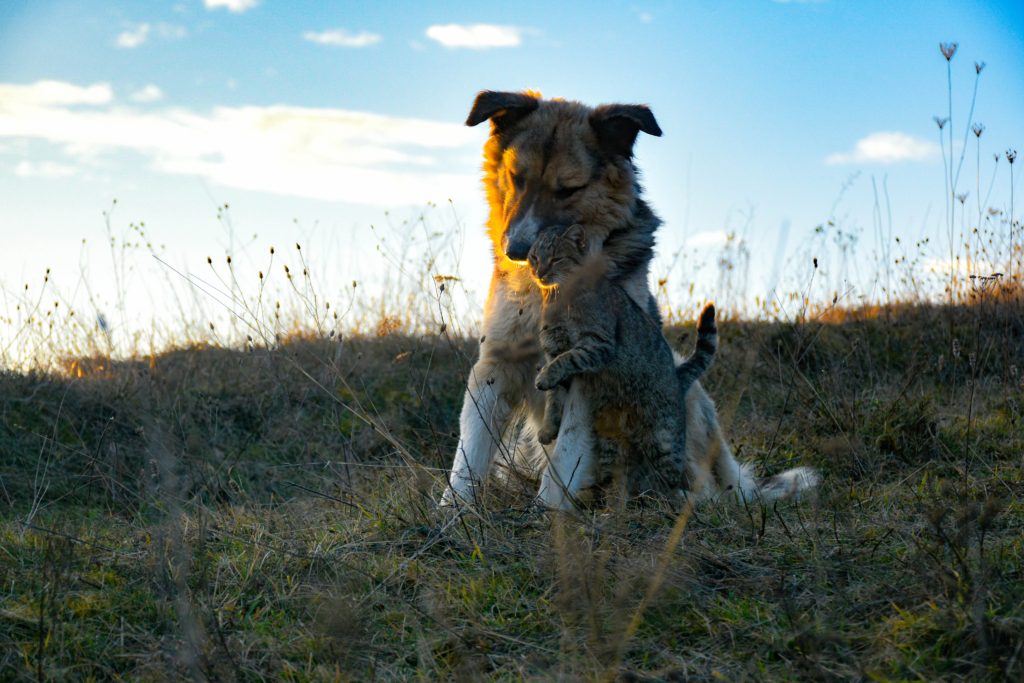Are you an avid bird enthusiast in Texas looking to attract more of the magnificent great-tailed grackles to your garden? Look no further! This article will provide you with essential tips and tricks to create a welcoming environment for these beautiful birds. From the right bird seed mixes to choosing the perfect feeders and accessories, we’ll explore a range of brands like Kaytee, Perky-Pet, Droll Yankees, and more. So get ready to transform your garden into a haven for the marvelous great-tailed grackle!
Understanding the Great-tailed Grackle
The Great-tailed Grackle (Quiscalus mexicanus) is a common bird species native to North and South America. These striking birds are known for their large size and long, wedge-shaped tails. Great-tailed Grackles are easily identifiable by their glossy black feathers and bright yellow eyes. They have a unique vocalization, often producing a variety of calls and songs.
General characteristics and behavior
Great-tailed Grackles are highly social birds, often found in large flocks that can number in the thousands. They are opportunistic feeders and are adaptable to a variety of habitats, including urban areas, farmland, and wetlands. These birds are known for their bold and curious nature; you may often see them perched on fences, rooftops, or trees, observing their surroundings. Great-tailed Grackles are also highly intelligent and have been observed using tools, such as twigs, to extract food from hard-to-reach places.
Habitat and diet details
Great-tailed Grackles are found throughout the southern United States, including Texas. They prefer open areas near water sources, such as lakes, rivers, and marshes. These birds have a diverse diet, feeding on insects, fruits, grains, seeds, and even small vertebrates. They are opportunistic and will scavenge for food in urban areas, often visiting parks and gardens in search of a meal.
Role in the ecosystem and bird community
Great-tailed Grackles play an important role in the ecosystems they inhabit. They help control insect populations, including pests that can damage crops and gardens. Additionally, these birds participate in seed dispersal, aiding in the regeneration of plants and trees. Great-tailed Grackles are also known to interact with other bird species, forming mixed flocks that provide safety in numbers and share information about food sources and predators. Their presence in an area can attract a diverse range of bird species, making them a valuable addition to any bird community.
Attracting Great-tailed Grackles to Your Garden
If you want to attract Great-tailed Grackles to your garden, there are several strategies you can employ. By providing the ideal plants, water sources, and nesting locations, you can create an environment that is attractive to these charismatic birds.
Ideal plants and landscaping strategies
Great-tailed Grackles are attracted to gardens with a mix of trees, shrubs, and grasses. Consider planting species such as oak, pecan, and mesquite trees, as these provide a reliable source of food with their seeds and fruits. In terms of shrubs, opt for species like Texas sage, sumac, and honeysuckle, which offer both food and nesting opportunities. To create a diverse and appealing landscape, incorporate various grasses, such as sedge and bluestem. These plants not only provide cover and shelter but also attract insects, a vital food source for Great-tailed Grackles.
Water sources: birdbaths, fountains, and ponds
Great-tailed Grackles require access to water for drinking and grooming. Installing a birdbath or fountain in your garden can be a great way to attract these birds. Make sure the water source is shallow enough for them to enter and exit comfortably. Additionally, consider adding a small pond or water feature to provide a more natural and appealing water source for Great-tailed Grackles and other bird species.
Offering suitable nesting locations
Great-tailed Grackles build their nests in trees, often near water sources. To encourage nesting, provide tall trees with sturdy branches or trunks. Avoid excessive trimming or pruning during the nesting season, as this can disturb or destroy their nests. Additionally, consider providing nesting materials such as dried grass, twigs, and leaves, which Great-tailed Grackles can use to construct their nests.

Feeding Great-tailed Grackles
To attract Great-tailed Grackles to your garden, it is important to offer the right types of bird food. Understanding their preferences and nutritional needs will help ensure a successful feeding experience.
Types of bird food they prefer
Great-tailed Grackles have a varied diet and will readily consume a wide range of foods. They are particularly fond of insects such as grasshoppers, beetles, and caterpillars. Offering a mix of seeds, grains, and fruits can also attract these birds. Foods like sunflower seeds, cracked corn, millet, and mealworms are all popular choices. Be sure to provide a variety of food options to accommodate the different preferences of individual birds.
Important vitamins, minerals, and nutrients in their diet
Like all birds, Great-tailed Grackles require a balanced diet to maintain optimal health. In addition to proteins and carbohydrates provided by insects and seeds, they also need essential vitamins and minerals. Make sure to offer a diverse range of foods that provide these nutrients. Fruits like berries and apples can provide important vitamins, while calcium-rich foods like crushed eggshells or oyster shell grit can help support their bone health.
Feeding precautions and troubles to avoid
When feeding Great-tailed Grackles, it is important to avoid certain feeding practices that may cause harm to the birds or create unwanted problems. For example, avoid offering excessively salty or greasy foods, as these can be detrimental to their health. Additionally, be mindful of the quantity of food you provide. Offering too much food can attract an overwhelming number of birds and may lead to competition, aggression, or an over-reliance on handouts. Monitor the feeding area regularly and adjust the quantity of food accordingly.
Using Feeders Effectively
Using feeders can be an effective way to attract Great-tailed Grackles and provide them with a reliable food source. Here are some tips for selecting and managing feeders in your garden.
Best feeder types for Great-tailed Grackles
When choosing feeders for Great-tailed Grackles, opt for sturdy and spacious options. Platform feeders or hopper feeders with large perches work well, as they allow these larger birds to comfortably access the food. Avoid feeders with small openings or tubes, as they may not accommodate their size. Also, consider squirrel-proof feeders if you have squirrels in your area, as squirrels can quickly consume the food intended for the grackles.
Placing feeders strategically in your garden
The location of your feeders can greatly impact their effectiveness. Place the feeders in an open and easily accessible area, away from dense vegetation or areas prone to predators. This will allow Great-tailed Grackles to perch and feed without feeling vulnerable. Consider placing feeders near trees or shrubs that provide cover for the birds to retreat to in case of danger.
Managing feeder hygiene and maintenance
Regular cleaning and maintenance of feeders are crucial for the health of Great-tailed Grackles and other visiting birds. Bi-weekly cleaning of feeders with mild soap and hot water can help prevent the spread of diseases and contamination. Additionally, periodically check the feeders for signs of wear and tear, and make any necessary repairs or replacements to ensure they remain safe and functional.

Dealing With Grackle Predators and Pests
While Great-tailed Grackles are a hardy species, they can still fall victim to predators and face challenges from unwanted pests. Taking steps to protect them will help ensure their safety and well-being.
Common Grackle predators in Texas
Great-tailed Grackles face predation from a variety of animals, including domestic cats, hawks, owls, and raccoons. Cats pose a particular threat, as they can climb trees and surprise the birds while they are nesting or roosting. Installing predator deterrents, such as spikes or motion-activated sprinklers, can help discourage predators from targeting Great-tailed Grackles.
Protecting Grackles against threats
To protect Great-tailed Grackles, create a safe garden environment by minimizing the use of pesticides and chemicals, as these can negatively impact their health. Additionally, maintaining a well-maintained landscape with ample cover, such as trees and shrubs, can help reduce the risk of predation. Finally, be vigilant and report any incidents of illegal hunting or trapping of Great-tailed Grackles to local authorities.
Dealing with unwanted pests in bird-friendly gardens
While attracting Great-tailed Grackles to your garden can be beneficial, you may also encounter other unwanted pests. For example, squirrels or raccoons may attempt to raid your bird feeders or nests. Using squirrel-proof feeders and employing deterrents, such as motion-activated sprinklers or ultrasonic devices, can help keep these pests at bay. Additionally, consider planting natural deterrents, such as marigolds or lavender, to repel unwanted insects.
Encouraging Grackle-Friendly Behavior
To foster a positive relationship with Great-tailed Grackles, you can encourage behaviors that benefit both the birds and your garden. By engaging them for natural pest control, incorporating interactive elements, and supporting them during mating and nesting seasons, you can create a mutually beneficial environment.
Engaging Grackles for natural pest control
Great-tailed Grackles are voracious insect eaters, making them excellent allies for natural pest control. Instead of using chemical pesticides, consider relying on their presence to control garden pests. By providing a suitable habitat, including food sources and nesting locations, you can encourage Great-tailed Grackles to actively forage for insects and help keep your garden pest-free.
Incorporating interactive elements in your garden
Great-tailed Grackles are intelligent and curious birds, so incorporating interactive elements in your garden can provide them with mental stimulation and entertainment. This can include placing mirrors, hanging shiny objects, or providing puzzle feeders that require problem-solving skills. These elements will not only attract Great-tailed Grackles but also create an engaging and dynamic environment for them to explore.
Supporting Grackles during mating and nesting season
During the breeding season, Great-tailed Grackles engage in courtship displays and build nests to raise their young. To support their mating and nesting efforts, refrain from disturbing their nesting sites or removing active nests. Additionally, provide an ample supply of food during this time to ensure the parent birds have enough energy to care for their offspring. By supporting these crucial stages of their life cycle, you can contribute to the success and growth of the Great-tailed Grackle population.

Popular Grackle Products by Noted Companies
To assist in attracting and providing for Great-tailed Grackles, many companies offer specialized products designed to meet their needs. Here are some popular options from notable companies:
Feeder options by Pennington and Perky-Pets
Companies like Pennington and Perky-Pets offer a range of feeders suitable for Great-tailed Grackles. Look for large platform or hopper feeders that accommodate their size and provide ample feeding space.
Bird food and attractants by Wagner’s, Morning Song, and Wild Delight
Wagner’s, Morning Song, and Wild Delight are reputable brands that offer a variety of bird seed mixes and food products. Look for blends that include sunflower seeds, millet, and cracked corn, as these all attract Great-tailed Grackles.
Bird houses by Stokes Select and Woodlink
Stokes Select and Woodlink are known for their high-quality birdhouses. Look for houses with large openings and secure mounting systems to attract Great-tailed Grackles for nesting.
Maintaining a Great-tailed Grackle-Friendly Garden
Creating a Great-tailed Grackle-friendly garden requires regular care and attention. By adopting certain maintenance practices, you can ensure the health and well-being of both the birds and the overall ecosystem.
Regular cleaning and gardening practices
Regularly clean bird feeders, bird baths, and other water sources to prevent the spread of diseases and maintain water quality. Additionally, practice good gardening habits, such as removing weeds, trimming overgrown vegetation, and maintaining a clean environment free of debris. This will create a safe and inviting space for Great-tailed Grackles to forage and nest.
Reviewing the health of visited birds
While enjoying the presence of Great-tailed Grackles in your garden, it is important to stay vigilant and observe their health. Keep an eye out for any signs of illness or distress, such as lethargy, labored breathing, or abnormalities in appearance or behavior. If you notice any concerning symptoms, contact local wildlife authorities or a qualified avian veterinarian for assistance.
Seasonal care for Grackles
Great-tailed Grackles have different needs throughout the year, so it’s important to adjust your garden care accordingly. During the breeding season, provide extra food and nesting materials. In the winter, ensure an ample supply of food to help them through the colder months. Regularly monitor your garden to address any potential issues or changes in behavior that may require specific care or attention.
Importance of Supporting Grackle Population
Supporting the Great-tailed Grackle population is not only beneficial for the birds themselves, but also for the Texan ecology as a whole. Here are some reasons why it is important to preserve and protect these birds.
Grackles’ conservation status
While Great-tailed Grackles are not currently considered endangered, their populations have experienced declines in certain areas due to habitat loss and human interference. Engaging in practices that support their presence and well-being can help maintain their population and prevent further declines.
Significance to the Texan ecology
Great-tailed Grackles play a vital role in the Texan ecology by assisting in natural pest control, seed dispersal, and providing important interactions within bird communities. Their presence contributes to the overall diversity and balance of the ecosystem, benefiting both native plants and other bird species.
How your garden can help preserve Great-tailed Grackles
By creating a Great-tailed Grackle-friendly garden, you can contribute to the preservation of this species. Providing suitable habitat, food sources, and nesting opportunities creates a sustainable environment that supports their population. Moreover, sharing your knowledge and experiences with others can inspire them to adopt similar practices, further expanding and strengthening the efforts to preserve the Great-tailed Grackle population.
Additional Resources for Grackle Enthusiasts
For those interested in learning more about Great-tailed Grackles and engaging further with these birds, there are several resources available.
Organizations like Audubon Society for educational materials
The Audubon Society is a well-known organization that focuses on bird conservation and provides a wealth of educational materials and resources. Their publications, websites, and local chapters offer valuable information on Great-tailed Grackles and other bird species.
Upcoming birdwatching events in Texas
Texas is a hotspot for birdwatching, with numerous events and festivals taking place throughout the year. Keep an eye on local listings and websites for upcoming events where you can observe Great-tailed Grackles in their natural habitats and learn from experienced birdwatchers.
Books, guides, and blogs about Great-tailed Grackles
There are many books, guides, and blogs available that provide detailed information about Great-tailed Grackles. These resources offer insights into their behavior, natural history, and conservation, allowing enthusiasts to delve deeper into the fascinating world of these birds.
In conclusion, understanding and attracting Great-tailed Grackles to your garden can be a rewarding experience. By creating a suitable habitat, providing food and water sources, and implementing effective practices, you can ensure the well-being of these charismatic birds while enhancing the diversity and beauty of your garden.
